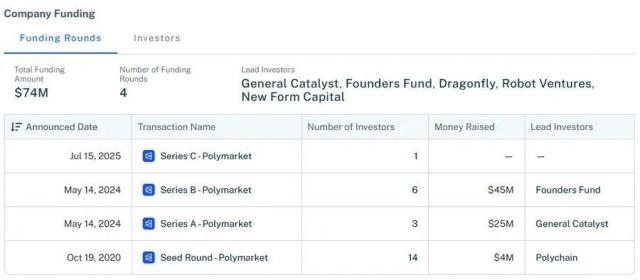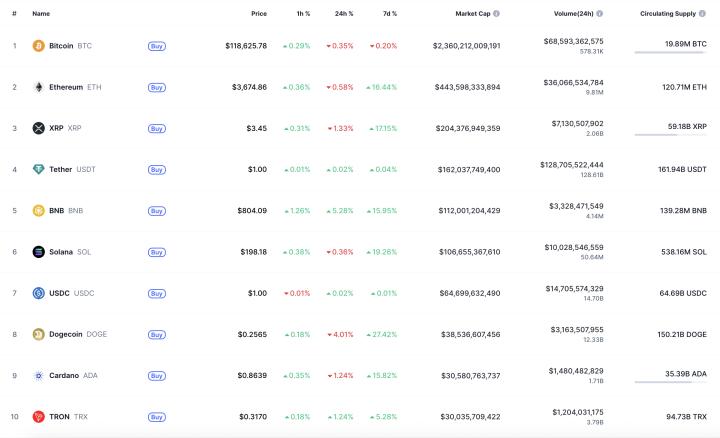Asset management giant BlackRock recently submitted an application to the SEC through Nasdaq, hoping to add staking functionality to its Ethereum spot ETF (ETHA). With the SEC's legal sources clarified, ETH staking volume reaching new highs, and strong institutional fund inflows, Ethereum is gradually transforming from a passively held crypto asset to a yield-generating tool that can create cash flow.
Table of Contents
ToggleInstitutional Rush: BlackRock's Ethereum Spot ETF Likely to Support Staking
BlackRock recently submitted an application to the SEC through Nasdaq, planning to support Ethereum staking services for its iShares ETH ETF. If approved, ETF investors can potentially benefit from both ETH price appreciation and staking rewards. This move symbolizes how TradFi is closely following regulatory framework changes to maximize positioning in crypto asset yield aspects.
In May this year, the SEC published the latest guidelines on staking rewards, clearly categorizing them as "ordinary income" rather than "securities transactions", significantly reducing institutional uncertainty in tax and regulatory matters. This change has also opened the door for subsequent Ethereum and Solana ETFs to compete with other traditional fixed-income assets.
(Solana Staking ETF Listed on 7/3, Becoming the First SEC-Approved C-Corp Crypto ETF in the US)
Institutional ETH Buying: Staking Volume Hits New High, ETF Sees Consecutive Ten-Week Net Inflow
Dune data shows that in July 2025, total Ethereum staking volume exceeded 36 million, accounting for over 29% of circulating supply, reaching a historical high. In the past month alone, Ethereum reserve strategy companies purchased 540,000 ETH (about $1.6 billion), with some companies investing in staking to create stable cash flow income.

SoSoValue data also indicates that US Ethereum spot ETFs have only seen net outflows for 5 days since mid-May, and have been experiencing net inflows for 10 consecutive weeks, with over $1.18 billion flowing in this week alone, showing continued confidence in ETH's long-term potential.

(Wake Up, E-Guards! Bank of America is Optimistic About ETH, Reviewing Recent Bullish Ethereum Voices)
Will Regulatory Clarity and Stablecoin Trend Drive Ethereum Bull Market?
With multiple enterprises like BlackRock applying for staking functionality, ETH staking rate hitting new highs, and regulatory clarity, Ethereum is transforming into a hybrid asset with both price appreciation and cash flow. Former BlackRock quantitative analyst and product manager Matt Mena stated:
Even if BlackRock only invests 75% (about $12 billion) of its $16 billion ETHA into staking, it could enhance Ethereum's security by about 10%. With billions of dollars in stablecoins potentially entering the market with the GENIUS Act, enhancing network security is crucial.
To further promote this narrative, the Ethereum Foundation (EF) has established a marketing company Etherealize, specifically dedicated to communicating Ethereum's long-term value and strategic significance to institutional clients.
BlackRock is leading the way in introducing ETH staking functionality to ETFs, establishing a product narrative of "tech stocks combined with cryptocurrency". As ETH becomes a core option for enterprise-level reserve strategies and cash flow allocation, it's clear that ETH is gradually becoming a new financial product that creates stable returns in the eyes of TradFi.
Risk Warning
Cryptocurrency investment carries high risks, and prices may fluctuate dramatically. You may lose all your principal. Please carefully assess the risks.
Bit last week again hit a new all-time high, but MSTR's stock price dropped over 6% last Friday, still far from its November high of $543. Is MSTR, as a Bit leverage, losing its advantage?
ToggleIs mNAV at a Low Point for Two Months, Has MSTR Lost Its Advantage?
As the pioneer of Bitcoin reserve companies, MicroStrategy has always been known for its Bitcoin leverage and agency advantages, potentially surpassing Bitcoin itself through embedded optionality of structural leverage, asset net value premium, or convertible bonds—bringing amplified returns.
However, observing its mNAV (current stock price to its owned Bitcoin value ratio), which has dropped from a high of 3.89 in November last year to 1.9, hovering below 2 for the past two months, one cannot help but question whether MSTR is losing its advantage as a Bit leverage.

MSTR Not Selected for S&P 500 Index
Twitter founder Jack Dorsey's payment platform Block will replace Hess Corp. (stock code HES) as a component of the S&P 500 Index before opening on 7/23, while the long-awaited Strategy has not been able to join this quarter. If it could enter the S&P 500 Index, Bit would begin to "automatically permeate all portfolios", including traditional 401k, retirement funds, and passive investment investors, and MSTR's stock price would have a better chance of rising.
Strategy's financial report will be released on 7/31. With Bit prices rising in the second quarter, Strategy previously announced an unrealized gain of $14.05 billion in Bit for the second quarter, promising to set an excellent profit record. Since one of the conditions for joining the S&P 500 Index components is "positive profit in the most recent quarter", Strategy is expected to qualify in the next quarter, but official inclusion will have to wait until after October.
MSTR Trading Volume Declines, Reduced Volatility Unfavorable for Fundraising
According to 10x Research, MSTR's recent trading volume has significantly dropped, with daily trading amount falling from $15 billion to $5 billion, and 30-day volatility dramatically decreasing from 165% to 58%, only slightly higher than Bit's 43%. High volatility is key to raising additional cash by selling stocks and convertible bonds, as embedded stock options require significant price fluctuations to increase their value.

MicroStrategy's Bitcoin Buying Momentum Weakens, Stock Price Unable to Advance Smoothly
Strategy purchased only 17,075 Bit in June, far lower than the purchase quantity from January to May. The author speculates this might be due to the recent low mNAV, which is unfavorable for fundraising and affects MicroStrategy's Bit purchasing speed. Additionally, its stock issuance will partially be used to pay high preferred stock dividends, and with increasing competitors, these could be reasons why its stock price cannot advance smoothly.
(Bit Keeps Creating New Highs, Why Isn't MSTR Moving?)
| Month | Bit Purchase Quantity |
| January | 24,707 |
| February | 27,989 |
| March | 29,089 |
| April | 25,370 |
| May | 26,695 |
| June | 17,075 |
Risk Warning
Cryptocurrency investment carries high risk, and prices may fluctuate dramatically. You may lose all your principal. Please carefully assess the risks.







